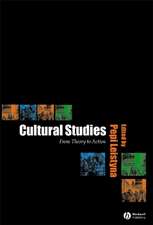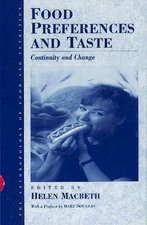Landscapes of Devils – Tensions of Place and Memory in the Argentinean Chaco
Autor Gastón R. Gordilloen Limba Engleză Paperback – 5 dec 2004
Preț: 263.68 lei
Nou
Puncte Express: 396
Preț estimativ în valută:
50.45€ • 54.98$ • 42.52£
50.45€ • 54.98$ • 42.52£
Carte tipărită la comandă
Livrare economică 23 aprilie-07 mai
Preluare comenzi: 021 569.72.76
Specificații
ISBN-13: 9780822333913
ISBN-10: 0822333910
Pagini: 328
Ilustrații: 60 b&w photographs, 6 maps
Dimensiuni: 148 x 234 x 15 mm
Greutate: 0.44 kg
Ediția:New.
Editura: MD – Duke University Press
ISBN-10: 0822333910
Pagini: 328
Ilustrații: 60 b&w photographs, 6 maps
Dimensiuni: 148 x 234 x 15 mm
Greutate: 0.44 kg
Ediția:New.
Editura: MD – Duke University Press
Recenzii
Gastón R. Gordillo has written a superb book about the complex, contradictory world of the Toba of the Argentinean Chaco. Especially memorable is the manner in which he demonstrates the contextual, shifting nature of the meaning of the various places and spaces, activities and imaginings, figures and fetishes that have made up the Toba world ever since the time of the ancient ones; this to unravel the historical experiences, and the memories, that configure everyday practices in a world beset by devilsand by some of the less enviable effects of an especially avaricious capitalist economy on its contract laborers. While it is situated in a remote part of South America, this is a work of global importance in both its historical and its theoretical reach.John Comaroff, University of Chicago
Notă biografică
Gaston R. Gordillo is Assistant Professor of Anthropology at the University of British Columbia in Vancouver. He is coauthor of "El rio y la frontera: movilizaciones aborigenes, obras publicas y ""mercosur"" en el Pilcomayo."
Textul de pe ultima copertă
"Gaston R. Gordillo has written a superb book about the complex, contradictory world of the Toba of the Argentinean Chaco. Especially memorable is the manner in which he demonstrates the contextual, shifting nature of the meaning of the various places and spaces, activities and imaginings, figures and fetishes that have made up the Toba world ever since the time of the 'ancient ones.' He unravels the historical experiences and the memories that configure everyday practices in a world beset by devils--and by some of the less enviable effects of an especially avaricious capitalist economy on its contract laborers. While it is situated in a remote part of South America, this is a work of global importance in both its historical and its theoretical reach."--John Comaroff, University of Chicago
Cuprins
List of Illustrations xi
Acknowledgments xv
Introduction 1
I. The Making of the Bush
1. Landmarks of Memory 15
2. Heaven and Hell 40
3. Places of Violence 53
4. Searching for Our Fathers 70
5. A Kind of Sanctuary 78
6. “In the Bush, You Can Do Anything” 88
II. Bones in the Cane Fields
7. The Promised Land 103
8. “It Seemed Like We Lived There” 109
9. The Breath of the Devils 123
10. “We Returned Rich” 139
11. “Dancing, Dancing, Dancing” 149
12. “We Didn’t Go on Strike” 158
13. “We’re Not Going to Die” 169
14. The Production of Local Knowledge 183
15. “With the Fish, We’re Rich” 198
16. Journeys to Strange Lands 209
17. Locations of Contentions and Hegemony 223
18. The Other Side 239
Conclusions 253
Glossary 261
Notes 265
References 281
Index 297
Acknowledgments xv
Introduction 1
I. The Making of the Bush
1. Landmarks of Memory 15
2. Heaven and Hell 40
3. Places of Violence 53
4. Searching for Our Fathers 70
5. A Kind of Sanctuary 78
6. “In the Bush, You Can Do Anything” 88
II. Bones in the Cane Fields
7. The Promised Land 103
8. “It Seemed Like We Lived There” 109
9. The Breath of the Devils 123
10. “We Returned Rich” 139
11. “Dancing, Dancing, Dancing” 149
12. “We Didn’t Go on Strike” 158
13. “We’re Not Going to Die” 169
14. The Production of Local Knowledge 183
15. “With the Fish, We’re Rich” 198
16. Journeys to Strange Lands 209
17. Locations of Contentions and Hegemony 223
18. The Other Side 239
Conclusions 253
Glossary 261
Notes 265
References 281
Index 297
Descriere
Examines the inscription of historical forces in the senses of place of the Tobas, an indigenous people of the Argentinean Chaco region whose recent history has been torn between exploitation in sugar plantations and relative autonomy in the bush.





















